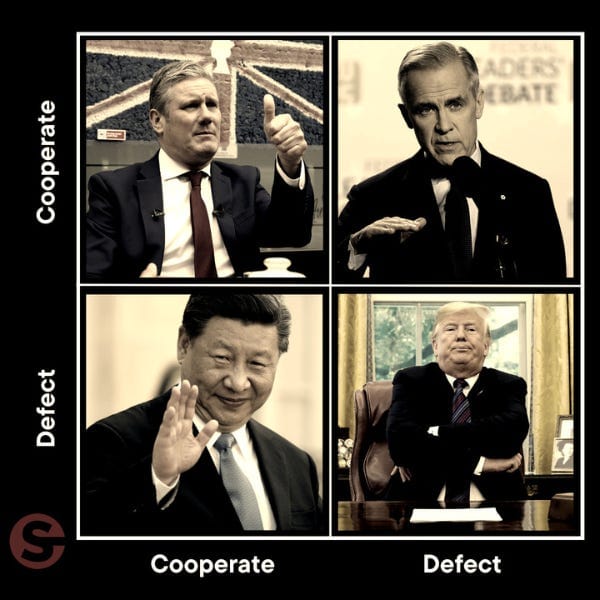Time-based advantage is disintegrating.
Until recently, institutional knowledge accumulated slowly. Employees built context through repetition: who to ask, what mattered, how to interpret vague instructions or incomplete data. Time-in-role created value. Familiarity justified salary.
That’s over.
GPT-class models are reducing the learning curve for new employees from months to days. By ingesting internal documentation, process guides, Slack transcripts, emails, and meeting notes, these systems compress context into something queryable.
At OpenAI (no surprise!), new hires are given a GPT trained on internal policies, acronyms, technical documentation, and project history. They don’t ask their manager how things work. They ask the model.
Hitachi deployed an internal assistant trained on onboarding flows, IT workflows, and HR documents. The outcome: four fewer days to ramp-up, and eight fewer hours of HR time per employee.
Unilever’s onboarding agent responds to new hire queries across functions. Adoption is high. Escalation volume is down. The knowledge that used to require hallway conversations or shadowing is now accessible through a prompt.
These companies are already using AI to restructure how employees gain internal awareness.
The pattern:
- Fewer dependencies on individual people.
- Faster time to contribution.
- Lower variability in onboarding quality.
“Tenure” no longer indicates value. The advantage now lies with organizations that systematize their internal knowledge and make it available on demand.
If you’re not doing that, you’re spending more to move slower.
(See a list of tools by function, at the end of the article under the header “Who is Replacing What”)

What’s Actually Getting Replaced
AI is replacing what made people useful.
Let’s start with communication: follow-ups, recaps, client check-ins, internal updates—these tasks once relied on tone, timing, and memory. Now they’re increasingly handled by models trained on prior correspondence. Same voice. Same cadence. No delay.
Consider client-facing roles: customer success managers and account leads often justified their positions through relationship memory: preferences, phrasing, soft triggers. That memory is now replicable. A well-trained model knows which clients prefer blunt summaries, who hates bullet points, who needs a Thursday nudge before a Monday decision.
This is already operational in tools like:
- Dialpad AI, which summarizes meetings and drafts next steps in-brand.
- Salesforce Einstein, which adjusts recommendations based on customer tone and behavior.
- Notion AI, which learns your internal language and applies it to every document created.
These are tenure-equalizers. Teams using them no longer rely on experience to maintain voice or deliver consistency. A recently-hired offshore contractor sitting halfway around the world can sound like the most tenured person in your company. A junior staffer can escalate an issue with the right framing, even if they’ve never done it before.
AI handles the repeatable. That includes nuance, if it’s been documented. And if it hasn’t, it should be.
The value of some employees used to lie in what they could recall and how they framed it. That can now be trained. So the value shifts to who builds the system that does the training and benefits from the repeatability.
The Strategic Implication
Every company has knowledge that isn’t written down.
But if your culture, process, or judgment lives in people’s heads, or worse, in scattered documents, your organization moves slower and forgets faster.
The strategic shift isn’t about AI adoption. It’s about institutional coherence.
Companies that treat knowledge / intelligence as infrastructure are building systems to preserve it:
- Codifying decision frameworks.
- Training internal GPTs on tone, logic, and language patterns.
- Creating systems of record that are searchable, traceable, and updatable.
This is happening across functions:
- Strategy teams manage competitive plays, not just competitor information
- Marketing teams apply existing voice of customer insight to every piece of collateral created.
- Product teams store not just the roadmap, but the tradeoffs behind each decision.
- Sales teams version-control messaging logic, not just scripts.
- HR teams train models to explain policy with human judgment—not just accuracy.
What was once tribal is now queryable.
What was once “our way of doing things” is now a set of trained behaviors.
And if you don’t encode it, someone else will replicate it from the outside. In tone, in timing, in positioning.
The question for operators is no longer: How do I teach new hires how we work?
It’s: What do we consider worth preserving, and have we made it accessible to the next person?
Because if your company can’t explain itself—clearly, instantly, and repeatedly—it will be outpaced by one that can.
Emerging Strategy helps companies figure out what makes success repeatable, and then turn that into strategy assets global teams can actually use.
Who’s Replacing What
If you’re in HR:
You’re not onboarding people. You’re onboarding language, logic, and lore.
- Trainual: Your 200-page handbook, rewritten as a clickable conversation.
- Guru: Ask it anything your manager forgot to mention.
- Sugarwork: Extracts what's in a veteran’s head—before they quit.
- Slite / Tome: Teaches new hires how to sound like they’ve been here forever.
If you’re in IT or Ops:
The new hire shouldn’t be waiting on logins while their excitement dies.
- JIFFY.ai: Kills the onboarding checklist. The tasks do themselves.
- Microsoft Copilot: AI inside Excel, Teams, Outlook. No retraining required.
- Google Gemini / DocAI: Feeds on your PDFs and spits out answers in-house style.
- Switchboard: Custom GPTs that speak fluent internal systems.
If you’re in Engineering or Product:
Stop wasting senior dev time. Start cloning their judgment.
- Swimm: Teaches your codebase like a senior engineer would—minus the attitude.
- Scribe: Follows clicks and keystrokes. Turns workflows into step-by-steps.
- PrivateGPT: Your own internal brain. No API calls to Mountain View.
- CustomGPT / ChatPDF: Talk to your Confluence pages. Finally.
If you’re the Founder:
Your tone, your strategy, your culture—captured and scaled.
- Amplyfyr: for embedding the founder’s voice in written comms
- AWS Bedrock / Azure OpenAI: For building GPTs that stay behind your firewall.
- Guru + RAG Stack: Turn your org’s tribal knowledge into a search engine that answers like you do.







